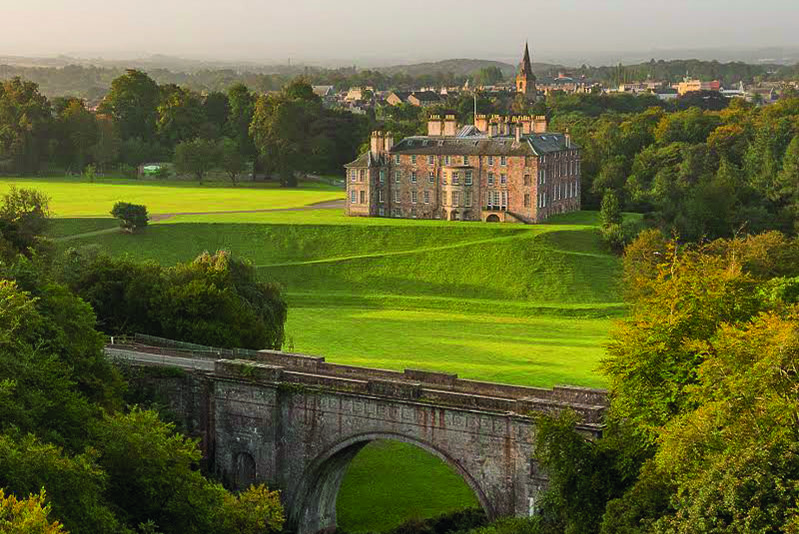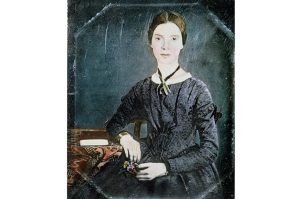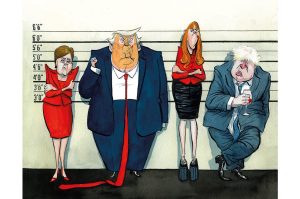Traveling internationally these days is a bit like how Dicky Umfraville, a character in Anthony Powell’s Dance to the Music of Time, describes aging: being punished for a crime one hasn’t committed. After taking my pre-departure COVID test, alerting the British government to my whereabouts for the next week (no small undertaking given I’d be in a different bed every night), and proving all this plus my vaccination status to the British Airways check-in desk at JFK, I finally settled in my seat and supplemented my mandatory mouth-muzzle with an eye mask as though bound for Gitmo, not Heathrow. An hour into the flight, the woman in front of me started bawling: a panic attack brought on by mild turbulence. A stewardess came over and held the distressed’s hand: ‘Don’t worry about wearing your mask, love.’ So that’s the trick.
Arriving in London at dawn, I was gratified to see how few of the locals have been brainwashed. Unlike in New York, where beyond all reason people continue to wear masks outside, in London the practice — and its attendant air of menace — is frowned upon as a Fauci-like failure of nerve. After taking my mandatory COVID test on Harley Street and visiting Freddy Gray in The Spectator’s suitably 18th-century offices, I was due for dinner at the Pryce-Jones’s. David and Clarissa’s hospitality, which I first experienced while doing my MA at the Courtauld Institute five years ago, is boundless. It was a typically bountiful PJ dinner including Clarissa’s famous salmon mousse, fine drink and the shining company of Nadira Naipaul, Jessica Douglas-Home and Mark Almond. I smiled all the way to the Caledonian Sleeper at Euston station.
The ostensible reason for my trip was that Triglyph Books, helmed by Clive Aslet, the former editor of Country Life, will publish my book on the bridges of the 18th-century Scottish architect Robert Adam in 2023. Triglyph’s other half, the photographer Dylan Thomas (yes, he’s heard all the jokes), is taking the pictures.
The Caledonian Sleeper cabins have been upgraded since my last trip a few years ago, though the bar car lacked the herd of fractious Scots I’d encountered last time. Dylan greeted me at Edinburgh Waverley station with a rented red Vauxhall, its trunk loaded with photography equipment (cameras, lenses, tripods, a drone) and a set of golf clubs; it can’t all be work. Our first stop was Dalkeith Palace, just south of Edinburgh, and the site of Robert Adam’s last bridge, constructed in 1792, just after his death. Though the carved stags that sat atop the parapet were quickly removed (they frightened the horses), the Montagu Bridge retains its solidity and gives a beautiful frame to the palace. The way to capture that framing in a photo was to clamber into the riverbed below. Mossy rocks and an uncertain grip almost ended the trip as it was starting.
Alnwick Castle, just over the border into England, was next. Blessed with a modicum of sun and permission to amble onto the Duke of Northumberland’s normally private pastures, we covered all the angles. Dinner and a bed were just down the road at the Cook & Barker. Gammon, egg and chips from the traditional menu, and pints of bitter. Crossing back into Scotland the next day, our destination was Dumfries House, bought by Prince Charles’s foundation in 2007, and the site of the first bridge Robert Adam likely ever worked on. The dreich Scottish weather appeared on cue as we arrived: a cause for concern when it comes to photography. Indefatigable Dylan suggested that the mist was atmosphere, and anyway it was expected in Scotland. Dumfries House has an onsite lodge, and we happened to be there on the opening night of its restaurant: haggis and venison.
On a photography project like this, one settles into a certain routine — early alarms set to catch the morning light, cocktail hour reserved for sunset shooting. But given the variable British weather, flexibility is crucial. It was too dark and soupy to shoot Culzean Castle, in Ayrshire on the west coast of Scotland, during the day, but such conditions hardly preclude a round of golf. The delightful Prestwick St Nicholas course is set hard by the Firth of Clyde, with views of the Isle of Arran from most holes. The match between Thomas and Riley was billed as a preview of the Ryder Cup, happening that weekend, but I’m glad to say my performance (I lost on the 18th hole) was no indicator of what would unfold in Wisconsin.
The final stop was Bath, at the other end of England. The Pulteney Bridge was Adam’s only public bridge project, and perhaps his most elaborate. Wanting to avoid the airport, I took a late-evening, six-and-a-half-hour train from Edinburgh to Bristol. At each Yorkshire and Midlands stop, the train absorbed and disgorged crowds of revelers keen for a night out somewhere other than their hometown. Somewhere near Derby, a visibly drunk adolescent appeared, singing the opening line, and only the opening line, to Elvis Presley’s ‘Hound Dog’. It was a bridge too far.
Benjamin Riley is managing editor of the New Criterion. This article was originally published in The Spectator’s November 2021 World edition.


















